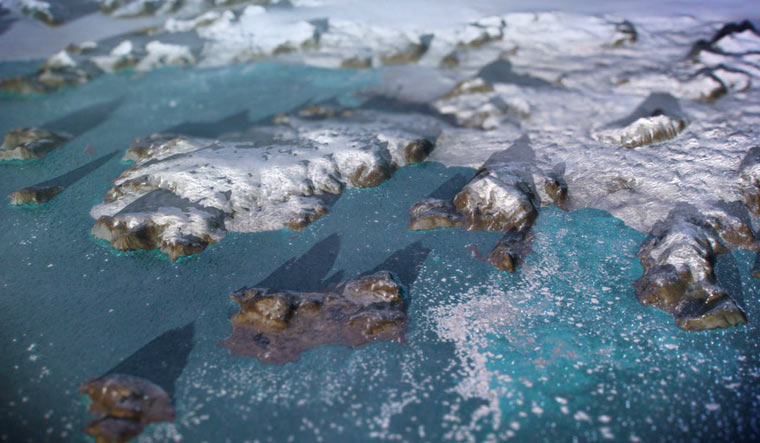 File image | NASA
File image | NASA
US President Donald Trump announced Tuesday that he is postponing a planned meeting with Denmark's prime minister due to her lack of interest in selling Greenland to the United States.
“Based on Prime Minister Mette Frederiksen's comments, that she would have no interest in discussing the purchase of Greenland, I will be postponing our meeting scheduled in two weeks for another time,” Trump tweeted.
Trump had confirmed on Sunday that he wanted to buy. However, he had made it clear that it wasn't a priority for his government
“It's something we talked about,” he told reporters.
Denmark colonized the 800,000 square-mile island in the 18th century. It is home to only about 57,000 people, most of whom belong to the indigenous Inuit community. Trump had earlier said that he thought acquiring Greenland was strategically interesting, calling it, "Essentially, it's a large real estate deal."
Greenland's ministry of foreign affairs insisted Friday the island was ready to talk business but was not for sale.
"#Greenland is rich invaluable resources such as minerals, the purest water and ice, fish stocks, seafood, renewable energy and is a new frontier for adventure tourism," it tweeted. "We're open for business, not for sale," it added.
Military strategy, financial gains or both?
Why is Trump interested in buying Greenland, whose ice sheet is slowly melting thanks to global warming? Most recent data showed that 712,000 square kilometres of the sheet— almost 40 per cent of ice on Greenland— was melting and that should all of it melt, it could raise sea levels by more than seven meters.
The last real estate offer made on Greenland was made by President Harry Truman in 1946, an offer of $100 million. Reforms in the Danish government in 1979 and 2009 has given Greenland substantial autonomy. US' interest in Greenland dates back to the 19th century. The idea was first raised in 1867 by President Andrew Johnson. In 1941, Denmark agreed to an American presence in the country. It has maintained an airbase at Thule in the north-western territory of Greenland since 1952.
The GIUK gap or the corridor between Greenland, Iceland and the UK has been strategically important for Russian submarines to enter the Atlantic. Another reason for America's renewed interest in Greenland could also be due to China calling itself an Arctic power. Control over the GIUK corridor would definitely up US' pull in the climate of trade wars and a troubled world economy. This holds truer with Britain's and European economy being in trouble owing to Brexit.
The locals, however, may not be keen on American rule. Aaja Chemnitz Larsen, one of Greenland’s two MPs in the Danish parliament, said, proposals regarding the island “should have been discussed directly” with its elected officials and its people, she told a Danish newspaper.
This isn't the first time US has shown interest in acquiring land. In 1917, US bought the Virgin Islands from Denmark for $25 million. In 1867, President Johnson bought Alaska from Russia for $7.2 million. At 800,000 square miles, Greenland is a great aircraft base and future rocket-launching site. But these activities could easily damage the endangered ice sheet of Greenland further. Back in 1946, fresh-off victorious of the second World War, US showed interest in Greenland.
Arctic sea lanes, US defence secretary Mike Pompeo had said, slashes travel time to Asia from the West. “Arctic sea lanes could [become] the 21st century Suez and Panama Canals,” he added. For now, however, let's hope the rule largely lies in the hands of Greenlanders?





No comments:
Post a Comment